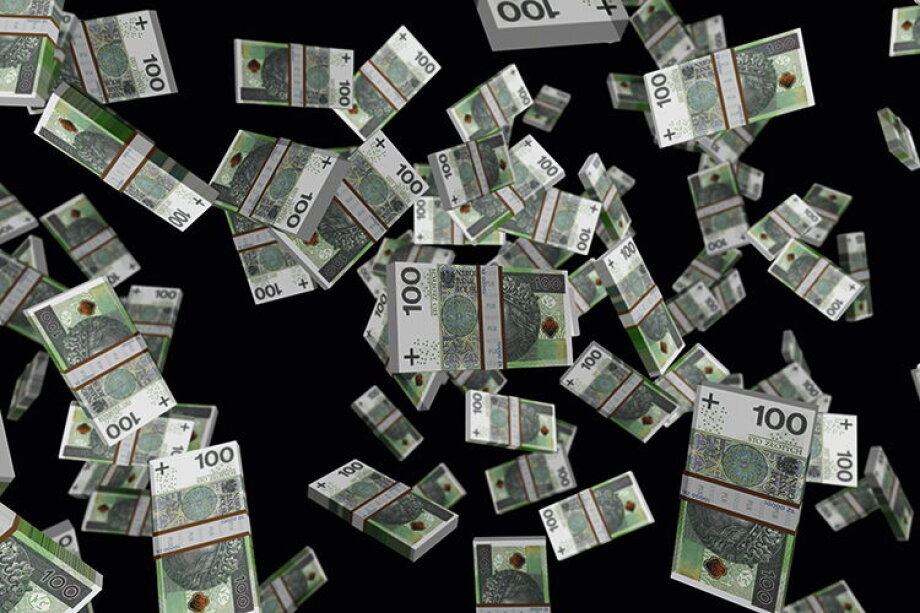Since the pandemic, we have seen a change in the money demand function. Earlier, money was a desired commodity, but during the pandemic, markets everywhere in the world have been flooded with cheap money, reducing interest rates to historically low levels. Low interest rates were supposed to “salvage” us from the virus, however irrational it may sound.
The trigger for the outbreak of uncontrolled inflation in the world is the war between Russia and Ukraine. However, half a year after it was started, its ending in still not in sight and the environment of permanent high inflation may persist for a while longer. The US are in a much better situation, as, although the level of inflation is a huge surprise, the actions taken to fight it are also more decisive than on the Old Continent. In the United States, the slowdown is not drastic despite the technical recession, because, firstly, the war is far away across the ocean, secondly, there is no spectre of cutting off energy supplies for the winter, and thirdly, and very importantly, in the US, the priority is to fight inflation with the view of maintaining strong economic growth in the long run. In Europe, however, the large difference in the amount of debt between different countries continues to be a very significant political topic. The eurozone countries are characterised by different potential GDP dynamics and different abilities to bear debt servicing costs. An increase in interest rates would adversely affect some countries of southern Europe which live beyond their means. Thus, setting up a drip to the countries of the South seems to be – for the ECB – as important as caring for price stability. These three aspects have led to a situation, where we are witnessing an unprecedented increase in the value of USD against EUR. It is not surprising that the ECB was the last to start with interest rate increases, and the least daring, and this indicates that the EUR will continue to weaken against the USD at least until the end of the war, or until end of the winter and the time of securing the interests of the whole of Europe, i.e. in the medium term. The so-called reverse currency war that we are observing, i.e. the preference for a strong currency in order not to import inflation, goes off in favor of the United States. The vision of the crisis is much sharper in Europe.
The Polish currency is closely related to the EUR – most of the activities of economic entities are based on trade with EU countries. In normal times, the PLN should slowly appreciate against the EUR, as Poland would catch up with the economic gap towards other European countries. However, it is exactly the opposite. Firstly, the reasons for this include the fact that Poland is perceived as a frontier country. There is a war going on right on the Polish eastern border. The pandemic and the war have led to a sell-off of the PLN, so the end of the war could have a salutary effect on the Polish currency. Unfortunately, the end of the war does not necessarily mean better times. The actions of the government and the central bank in Poland, instead of caring for the strength of the Polish zloty – which would help fight the very high inflation – focus on enchanting reality and continuing to give money away to political clients. This places Poland closer to economically ill countries such as Greece and Italy. Although, it should also be noted that the impact of the weak PLN, which has led to the high costs of inflation, has been borne primarily by households. Poland has still retained the profitability of exports and the ability to create jobs, which is evidenced by the second lowest unemployment rate in the EU. To sum up, it is the Polish society that pays the price, not the entrepreneurs, at least yet.
Adoption of the EUR by Poland could be a solution to some of the problems. Poland pledged to enter the eurozone when joining the EU in 2004. This would be a natural step in the development of the common Europe project. Nevertheless, the euro is a solution for strong economies. The weak ones – as in the animal world – either need protectors or they ask themselves for trouble. Poland is no longer among the strong economies. Besides, in Poland, there is no political consensus on the adoption of the euro and we cannot expect any within the next decade. The EUR as currency of Poland is currently impossible for political, legal and, above all, economic reasons. Poland does not meet the Convergence Criteria for adopting the euro (more information in the table). This closes the way to joining Euroland, regardless of whether there is a political will to adopt the euro or not. Thus, the Polish currency will remain exposed to dynamic changes in the exchange rate as long as the war and the economic problems of Europe will last. Furthermore, Europe’s problems will be visible in the exchange rate of the Polish currency, as Poland and Europe are, if we use the language from world of animals, in mutualism.
As of Autumn 2022, Poland does not meet the Maastricht Convergence Criteria:
- Polish legislation does not fully comply with the requirement set out in Art. 131 TFEU – the deficits concern, among others the independence of the central bank.
- Poland does not meet the price stability criterion. Inflation in a country that would like to adopt the euro must not deviate from the average in the three countries where prices are the most stable.
- Poland does not meet the public finance criterion – i.e. the finance deficit should be no more than 3 percent GDP and public debt less than 60% GDP.
- Poland does not meet the criterion of the exchange rate stability.
- Poland does not meet the criterion of the convergence of long-term interest rates, calculated in accordance with the average value of the previous-year rates noted in three countries with the most stable inflation.


















